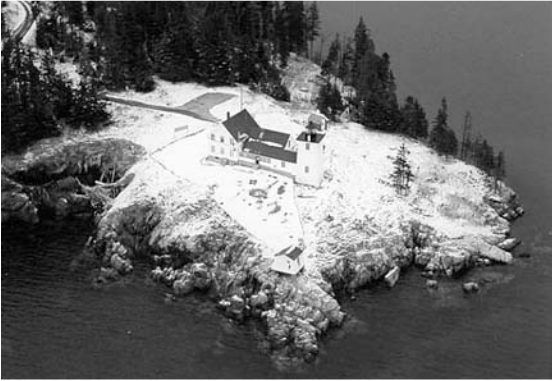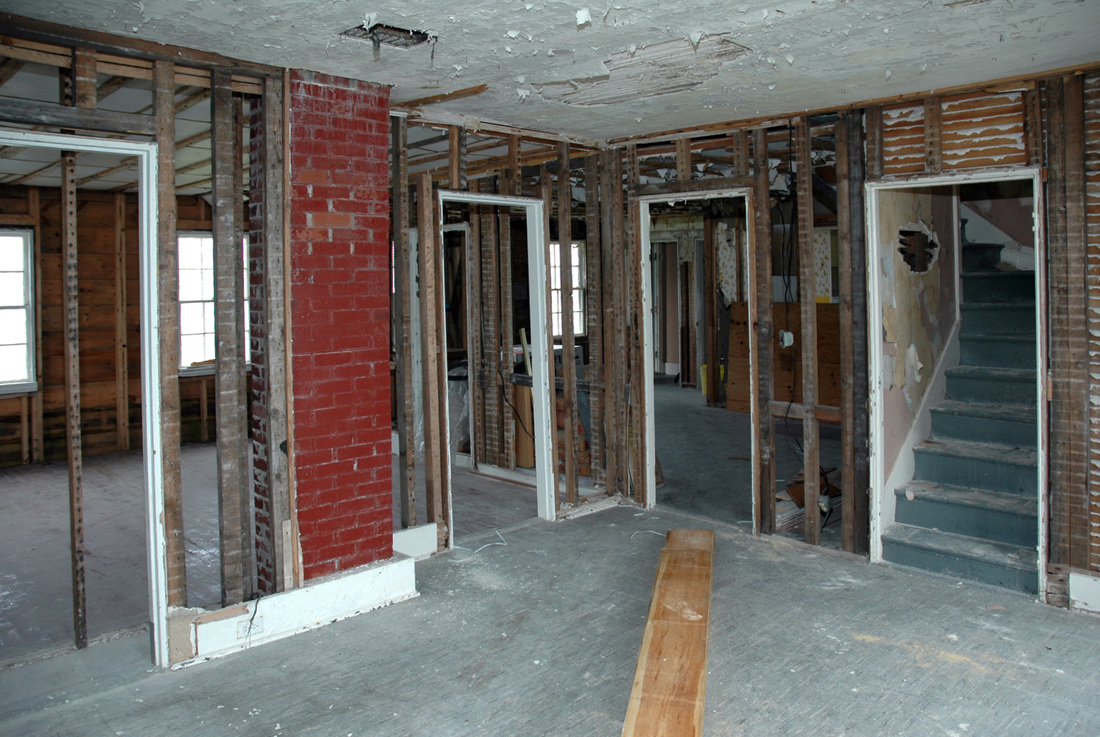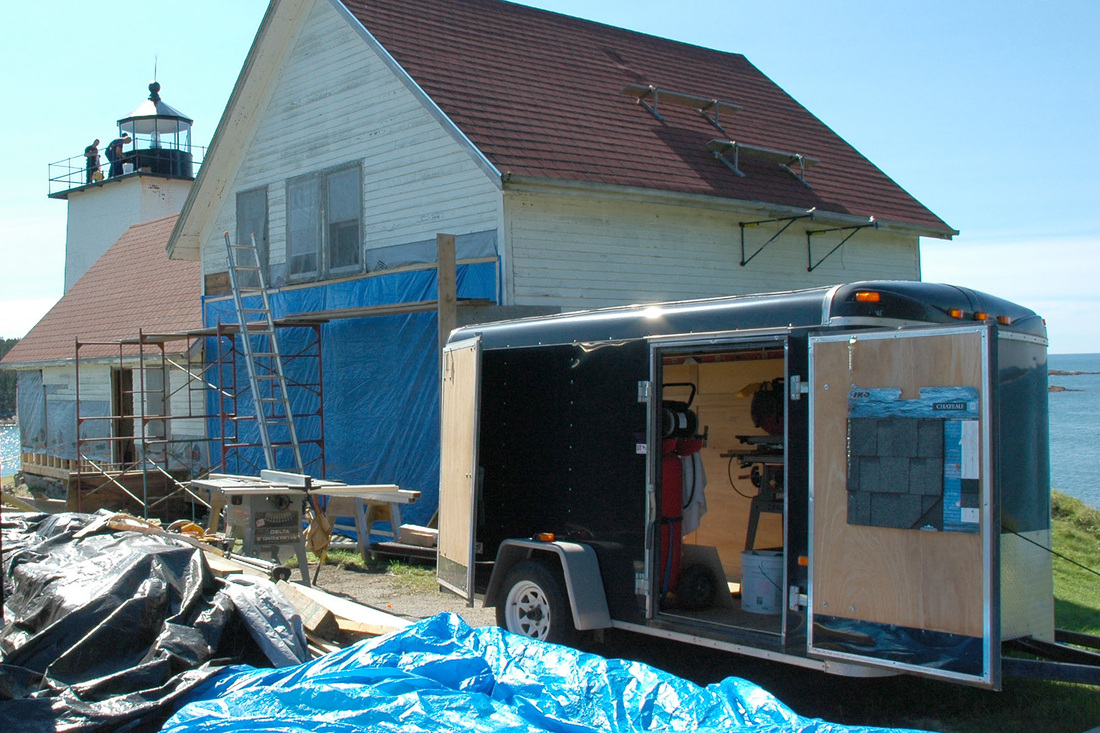History of Burnt Coat Harbor Light, Swans Island, Maine
© Jeremy D'Entremont. Do not reproduce any images or text from this website without permission of the author.
More information: Front page / Photos / Bibliography / Cruises / Postcards
This tattered shoreline has given the island many anchorages. Burnt Coat Harbor on the south side is the best of them, some say the best small harbor in Eastern Maine. It is over a mile long and a half mile broad with enough water to float all but the largest vessels. . . . Above it on Hockamock Head, the highest headland on the island, perches a lighthouse. -- Perry D. Westbrook, Biography of an Island
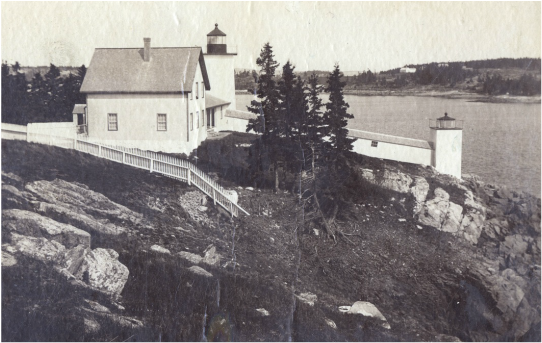
Circa 1880, showing both the rear and front range lights. (National Archives)
Swans Island, about 7,000 acres in size, was first charted by explorer Samuel de Champlain in 1604. Champlain called the island Brule-Cote, or "Burnt Coast." It had long been used by local Indians as a summer fishing and hunting spot. The island was bought by James Swan, a participant in the Boston Tea Party, in 1786.
The first permanent white settler was David Smith of New Hampshire in 1791. Smith had 24 children by two marriages and his feats of strength earned him the nickname "King David." Many island natives can trace their ancestry to David Smith.
The island developed strong granite, fishing, and lobstering industries in the nineteenth century. Burnt Coat Harbor, on the island's south side, was a valuable sheltered spot.
Author Robert Thayer Sterling wrote that "it was in this little place out of the wind and storm sailors found restfulness." Mary Bradford Crowninshield's 1886 book All Among the Lighthouses called Burnt Coat Harbor the "snuggest and prettiest on the coast."
The first permanent white settler was David Smith of New Hampshire in 1791. Smith had 24 children by two marriages and his feats of strength earned him the nickname "King David." Many island natives can trace their ancestry to David Smith.
The island developed strong granite, fishing, and lobstering industries in the nineteenth century. Burnt Coat Harbor, on the island's south side, was a valuable sheltered spot.
Author Robert Thayer Sterling wrote that "it was in this little place out of the wind and storm sailors found restfulness." Mary Bradford Crowninshield's 1886 book All Among the Lighthouses called Burnt Coat Harbor the "snuggest and prettiest on the coast."
To mark the entrance to Burnt Coat Harbor, a light station was established on the promontory called Hockamock Head in 1872. Two towers were erected to serve as range lights.

Late 1800s (National Archives).
In 1884, after numerous complaints that the range lights were confusing, the front light was discontinued, although the tower remained standing for some years.
In 1886, a lighthouse was proposed for Green Island, about a mile south of the entrance to Burnt Coat Harbor. The recommendation read:
The range lights which guided to the entrance were unsatisfactory, and a vessel was wrecked last year while trying to make the harbor by their aid. One of them was accordingly discontinued and it is proposed to erect in its stead a lighthouse on Green Island.
The Lighthouse Board asked for $12,000 for this new light station. The request was repeated yearly for a decade with no success.
The present square brick lighthouse was originally connected by a covered walkway to the 1 1/2-story wood-frame keeper's house. The oil house, still standing, was added in 1895. The bell tower that was added in 1911 also remains, although in disrepair. A foghorn eventually replaced the bell, but there were problems hearing the signal offshore.
In 1886, a lighthouse was proposed for Green Island, about a mile south of the entrance to Burnt Coat Harbor. The recommendation read:
The range lights which guided to the entrance were unsatisfactory, and a vessel was wrecked last year while trying to make the harbor by their aid. One of them was accordingly discontinued and it is proposed to erect in its stead a lighthouse on Green Island.
The Lighthouse Board asked for $12,000 for this new light station. The request was repeated yearly for a decade with no success.
The present square brick lighthouse was originally connected by a covered walkway to the 1 1/2-story wood-frame keeper's house. The oil house, still standing, was added in 1895. The bell tower that was added in 1911 also remains, although in disrepair. A foghorn eventually replaced the bell, but there were problems hearing the signal offshore.
Wrecks continued near Hockamock Head. Vessels frequently tried to make it into sheltered Burnt Coat Harbor in storms.
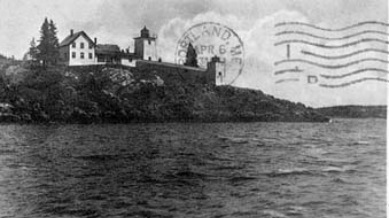
In the early 1900s, a coal schooner on its way to Bar Harbor tried to make shelter but ran into Johns Island Ledge and broke apart. The crew managed to escape, but the ship's cargo provided fuel for many Swan's Island residents that year.
The Coast Guard automated the light in 1975. The original fourth-order Fresnel lens was removed and replaced by an automatic light on a skeleton tower nearby. The new light wasn't as bright as the old one, and after numerous complaints the Coast Guard relighted the lighthouse with an automatic 250mm optic.
In 1982, the tower was badly in need of new paint. To save costs, the Coast Guard removed the remaining paint and coated the tower with a sealant. Local boaters complained that this rendered the lighthouse invisible against the dark background, so the Coast Guard gave the tower a new coat of white paint.
The Coast Guard automated the light in 1975. The original fourth-order Fresnel lens was removed and replaced by an automatic light on a skeleton tower nearby. The new light wasn't as bright as the old one, and after numerous complaints the Coast Guard relighted the lighthouse with an automatic 250mm optic.
In 1982, the tower was badly in need of new paint. To save costs, the Coast Guard removed the remaining paint and coated the tower with a sealant. Local boaters complained that this rendered the lighthouse invisible against the dark background, so the Coast Guard gave the tower a new coat of white paint.
The station became the property of the Town of Swans Island in 1994.
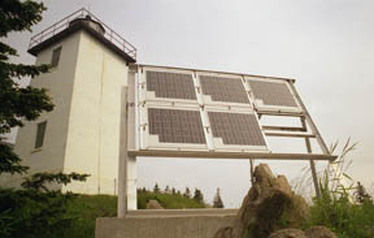
The light was converted to solar power in 2002.
A committee was formed to oversee the management of the property. With nobody living at the station and no regular maintenance, the property quickly deteriorated.
In 2002, the town received a grant from the Virginia Wellington Cabot Foundation for an architectural assessment of the keeper's house. A thorough study of the building was completed by Bar Harbor architect Roc Caivano, and the town initiated a comprehensive restoration plan.
A $15,000 grant was received in April 2006 from the MBNA Foundation Conservation Grants Program. Combined with private donations and funds from the town, this allowed the work on the exterior of the keeper's house to begin in the summer of 2006. The entire roof had to be re-boarded, then covered with Hatteras Red asphalt shingles.
In 2002, the town received a grant from the Virginia Wellington Cabot Foundation for an architectural assessment of the keeper's house. A thorough study of the building was completed by Bar Harbor architect Roc Caivano, and the town initiated a comprehensive restoration plan.
A $15,000 grant was received in April 2006 from the MBNA Foundation Conservation Grants Program. Combined with private donations and funds from the town, this allowed the work on the exterior of the keeper's house to begin in the summer of 2006. The entire roof had to be re-boarded, then covered with Hatteras Red asphalt shingles.
A grant of $7,500 was also received in 2006 from the Maine Historic Preservation Commission's New Century Community Program for a survey of the windows in the keeper's house and their repair or replacement. The survey led to the discovery of problems with the building's foundation.
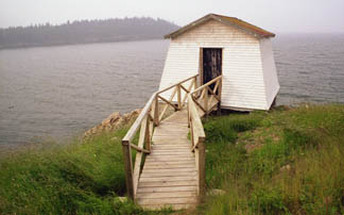
The nonprofit Friends of the Swan’s Island Lighthouse have now taken responsibility for restoring, managing, and maintaining the light station buildings.
Friends of the Swan’s Island Lighthouse
Town of Swan’s Island
Swan’s Island, ME 04685
A new restoration plan is being carried out in phases. Phase 1, interior wood and metal, was completed in 2016. Phase 2, exterior masonry, catwalk, railing and foundation, was completed in 2019. Phase 3, interior masonry, remains to be done. Click here for more details.
Below - an interview with Eric and Fran Chetwynd of the Swans Island Lighthouse committee in the summer of 2019, on the podcast Light Hearted.
Below: Photos taken during restoration work in 2006 (courtesy of Donna Wiegle).
Keepers: (This list is a work in progress. If you have any information on the keepers of this lighthouse, I'd love to hear from you. You can email me at [email protected]. Anyone copying this list onto another web site does so at their own risk, as the list is always subject to updates and corrections.)
F. A. Allen (1872-1876), William N. Wasgatt (1876-1886), James H. Orcutt (1886-1897?), Orin Milan (1897-1932), Roscoe Chandler (1932-c.1945), Carroll Alley (Coast Guard c. 1955-1957), Don Constantino (Coast Guard, c. 1970-1972), Richard Braman (Coast Guard, c. 1968-1973)
F. A. Allen (1872-1876), William N. Wasgatt (1876-1886), James H. Orcutt (1886-1897?), Orin Milan (1897-1932), Roscoe Chandler (1932-c.1945), Carroll Alley (Coast Guard c. 1955-1957), Don Constantino (Coast Guard, c. 1970-1972), Richard Braman (Coast Guard, c. 1968-1973)
